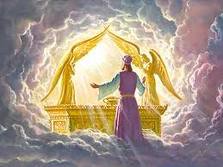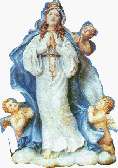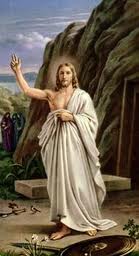 |
 |
 |
 | ||
 |
.ESSENE A first century and later religious group with certain defined beliefs and practices. |
GNOSTIC First century and later religious groups suppressed by the Christian church. |
 | ||
 |
|
|
 | ||
 |
 |
 |
 |
 |
 |
 |
 | ||
 |
.ESSENE A first century and later religious group with certain defined beliefs and practices. |
GNOSTIC First century and later religious groups suppressed by the Christian church. |
 | ||
 |
|
|
 | ||
 |
 |
 |
 |
....The Christian "off-shoot" of the ESSENES has forced down the throats of the whole Roman Empire after Constantine arranged for a Paganized Version of ESSENISM that was agreed on by the bishops that met at Nicea in France and Constantinople in Turkey. ...Constantine himself decreed that these councils be held, and what was to be decided. ...The only one who voted his own true beliefs was Bishop Arias, who represented at that time the area where the Jews and Jesus and the Twelve Apostles actually lived. ...For refusing to be "politically correct" he was stripped of all authority and banished to Africa. .....Constantine himself and many of his descendents did not believe what was decided to be the dogma of the new "Christian World." |
as presented by Marvin Olasky in WORLD MAY 20, 2008 VOLUME 21 - NUMBER 20 WORLD, PO Box 20002, Asheville, NC 28802-9998 |
Article begins on page 23 "GNOSTICISM is probably hotter now than it has been since --- well, over 1,500 years ago. As "The Da Vinci Code hits movie theaters and probably extends its three year run on the New York Times bestselling fiction list, Gnostic books like the Gospel of Judas and The Lost Gospel are also prominent on nonfiction bestseller charts. Peter Jones, professor of New Testament at Westminster Seminary California and director of Christian Witness to a Pagan Planet (cwipp.org) is the author of The Gnostic Empire Strikes Back and other books that critique anti-Christian doctrines, including Cracking Da Vinci's Code (Cook Communications) and the newly published Stolen Identity: The Conspiracy to Reinvent Jesus (Cook), a detailed comparison of the Gnostic and the biblical Jesus." |
| I, Dr. Robert F. Holt, MD will be seen by Fundamentalist Christians as the "Devil's Advocate" in this discussion -- a discussion that would not even be held if Fundamentalist Christians had their preference. Since Dan Brown has again brought up the subject of Gnostic beliefs, feminism, and "Religious Toleration" even for so-called "Pagan" religious ideas - Pastor Jones, scholar and author, feels duty-bound to confront him, his book, and the resulting movie. My answers to Jones' complaints will be in the yellow boxes. |
WORLD: How do you define Gnosticism? JONES: Gnosticism is formed from the Greek term gnosis meaning knowledge, but it means here a particular form of knowledge, namely "spiritual experience." Like all pagan spirituality, so-called "Christian" Gnosticism engages in "sacred technologies" to access the higher, spiritual self, the self that is part of God. In this essentially out-of-body experience, all physical and this-worldly restraints, like rational thinking and a sense of specific gender, fall away. In a word, the experience of "enlightenment" is both the rejection of the goodness of the physical creation and an acquisition of the knowledge of the divinity of the human soul." |
| If "knowledge" is EVIL and "stupidity or ignorance" is GOOD, then of course JONES has a point. If, however, "knowledge" is GOOD and "stupidity or ignorance" is, if not actually EVIL at least counter-productive to human advancement and the cause of endless wars and human suffering, then the Fundamentalists JONES are trying to protect from learning anything new and improving their behavior, both ethical and practical, are on the wrong side. Here JONES is calling "Enlightenment" a bad thing, which infers that the Western World has been on the wrong path for several centuries at least, and that he would prefer the Dark Ages and Middle Ages and Puritanism to Protestantism, "Divine Right" kings to republican governments, and inquisitions and "witch-killings" to religious toleration. |
WORLD: So Gnostics see the human soul as divine, but how do Gnostic texts typically depict God? JONES: There are two kinds of God. There is the Father of the Totalities, the Great Spirit or the Force behind everything, the Source from which true Gnostics have emanated and from whom they have fallen into matter. To this God their divine spark or soul/spirit will eventually return at death. Then there is the God of orthodox Christianity, the God of the Old Testament, the Creator of heaven and earth. For the Gnostics this God is a blind and evil fool for having created evil matter. This is the God who foolishly says, "I am God and there is no other beside me," not knowing that above and beyond him is the Great Spirit. The Gnostic knows that Yahweh is a fool for demonstrating such ignorance and for leading human beings into ignorance. Thus the Gnostic Goddess casts Yahweh into hell." |
| In labeling Gnostics as "Pagan", JONES is here treading on thin ice as a defender of the orthodox Christian view. Jews and Muslims are the ones who defend the principle of "One God", Who they call Yahweh or Allah, among other names too numerous to mention here. As JONES has here mentioned Yahweh or Allah is traditionally held by Christians to be "Creator of heaven and earth" but JONES knows, and fails to mention here that Christians also believe, in opposition to his statement here, that Jesus Christ is also held to be the real "Creator" of heaven and earth. Here Christians are expected to "close their minds" to reason and logic, and accept that three gods are one and one three, and that Jesus is the real "Creator". This is the very process of closing our minds to rational thinking that JONES is accusing Gnostics of doing when they meditate or chant mantras or go into a trance. In defense of these Gnostic "spiritual technologies" let me just suggest that most so-called Gnostics come out of their trances after a while, don't say their mantras continuously, and only meditate occasionally. Contrary to this part time "insanity", Christians are required to go permanently into theirs, the dogma of the Trinity. And indeed, the idea that there is one unseen "God" and that we are all a part of this "God" with some desire to return to fellowship with Him (Her) makes more sense to those who think (at least occasionally) than the "Trinity" does to those who never think, or are afraid to think. |
WORLD: It doesn't sound like Gnostics have much respect for the Bible. What is their view of biblical history? JONES: The very early Gnostic, MARCION (ca. A.D. 150), rejected God the lawgiver and thus the entire Old Testament. Later Gnostics did the same with even more vigor. For example, the media have given great attention recently to The Gospel of Judas. Bart Ehrman [Bestselling Books, May 6] calls Judas one of the greatest finds from Christian antiquity." Its official translators argue that Judas demonstrates the rich diversity of perspectives within early Christianity ... during [its] formative period." Actually, Judas contains some of the typical (and radical) notions of second-century "Sethian" Gnosticism. In this kind of Gnosticism, God the Creator is an evil demon; the reprobates of Old Testament history --- Cain, Esau, Korah, and the Sodomites ---are the true heroes; Adam, Abraham, Isaac, Jacob, and the prophets are "a laughingstock." Clearly Judas fits the prototype for heroes." |
| I don't think JONES would label the new breed of scholars who look at the Bible critically and support the "Documentary Hypothesus" as "Gnostics" but more likely as Atheists in disguise or denial. Marcion was in this being sensible and discriminating in the same areas as modern scholars are doing the same. To JONES it seems entirely right and plausible to criticize even other well-known scholars such as Bart Ehrman for suggesting that toleration and free discussion is a good thing. It's back to the Dark Ages for JONES, when defense of the indefensible is the only approved course. From this rocky stand, he lashes out to make fun of others' views, a typical time-honored technique of the Jesuits. Make fun of their beliefs, parade them in shame before the populace, torture them, and finally kill them and erase their books and ideas from human memory. |
WORLD: Let me ask about something else that's weird: Why did some early Gnostic texts depict Jesus passing through Mary as through a funnel? JONES: Some readers will have read of Gnosticism under the term "Docetism' from the Greek verb, dokeo -- "to seem." Christ only seemed to be physically human, but, as a matter of fact, Christ, from the realm of the spirit, could not be so closely associated with the work of the evil creator. In particular, the Sethian Gnostics (like Judas) laughed at the ignorance of those who thought they were crucifying Christ (since it was Simon of Cyrene on the cross). In the same way, Jesus could not have been physically associated with Mary. Indeed, there are a number of exhortations in the Gnostic texts to "flee maternity" and the "works of femininity" because to be a woman and give birth is to enmesh oneself in the evil works of created flesh, and thus become a prisoner of the evil God, Yahweh." |
|
The later Gnostics had lost sight of the meaning of "Gospel Pesher"
and depended, as did those who became the more orthodox Christians, on the
Gospels as written. Having so little of true history to work
with, these Gnostics truly struggled with this claim of a "virgin
birth" and someone came up with the implausible example cited here by
JONES. This does not mean that all Gnostics saw Mary as merely
a "funnel". But then the Gnostics lacked the
reliance on dogmatism and authority that has characterized the
Christians. Now all Catholics must accept the infaliability of
the "immaculate conception". Mary is no longer a
"funnel" but the price of this certainty is that she was no
longer "truly human" either.
"Gospel Pesher", by supplying details that JONES and those he defends would rather endlessly debate, shows that "Simon of Cyrene" was indeed crucified. But also makes it quite certain that Jesus was also crucified. As was also Judas Iscariot, as "the bad thief". Of these three that were crucified (there were, after all, three crosses, not one) only Judas was dead at the end of three days. But Catholics, as well as JONES, require a dead, not living Christ, to make their theology work. As for the exhortations to "flee maternity" and the "works of femininity" one can hardly call this unique to Gnosticism. Monks and nuns and unmarried priests have been the mainstay of Catholic Christian organization and power for 1000 years or more. As for the "evil God, Yahweh", the substitution of Satan or the Devil in traditional Christianity has sufficed to provide the same type of scapegoat on which to blame everything Christians don't like. |
WORLD: Parts of Gnosticism remind me of Hindu teachings. Was Gnosticism an attempt to meld Eastern religions and Christianity? JONES: There is some evidence that ancient Gnosticism took some of its inspiration from Hinduism, which is quite believable since Alexander went as far as India in the fourth century B.C. and created an international cosmopolitan, syncretistic culture. At least we can say that some of those steeped in the imperial mystery religions, and also majoring in trance and mysticism, were attracted to Christianity; they may well at some point have been tempted to blend pagan spirituality with Christian doctrine. In 1 Corinthians 14:23 Paul criticizes worship behavior that would make observers associate the church with the Dionysian cults' practice of trance-like "madness." |
|
Here perhaps our interviewer from "WORLD" and JONES are close to
talking sense. My own research has shown me that Lord Shiva, very
close to the "Chief God" of Hinduism, has wielded enormous power
over the beliefs of Christians as well as Hindus.
However, its quite likely that more mundane explanations work just as well in explaining so many paganisms associated with early Christianity and that are still venerated by modern Protestants. Protestants have been hampered from turning their backs on these paganisms by the likes of JONES who defends the status quo at any price. |
WORLD: Even though The Da Vinci Code invents a marriage between Jesus and Mary Magdalene, it seems that Gnostics have something against heterosexual activity ... JONES: The goal of Gnostic sexuality is androgeny, the blending of male and female in one human being. The distinction of male and female is the result of the Fall, and so to undo the effects of the Fall one must join the opposites and make the two one. The "Jesus" of the Gnostic Gospel of Thomas declares, "when you make the male and female one and the same, so that the male not be male nor the female female ... then you will enter the kingdom of heaven" (Saying 22). How interesting that this is happening in our own day, and that this is a definite developed theme in The Da Vinci Code." |
| JONES
knows, as well as many or most of his readers, that Dan Brown in The Da
Vinci Code did not "invent" a marriage between Jesus and
Mary Magdalene. Indeed a lawsuit in England was underway at
the time JONES wrote this or soon thereafter, in which the authors of
"Holy Blood/Holy Grail" sued Dan Brown for monetary
damages for "stealing their story" -- a very old story that has
persisted throughout the Middle Ages. They lost the
lawsuit, by the way, exactly for this reason.
"Gospel Pesher" shows quite conclusively that Jesus and Mary were indeed married by the time Jesus was crucified, but not for long. And that Mary Magdalene was indeed pregnant with her and Jesus' child. A daughter born six months later they named Demaris (Greek for "Tamar"). Demaris married the Apostle Paul when she was about 20 years old. Demaris was indeed a rather androgenous person, and Paul sent her on various errands like she was a man. To deliver his epistles to various churches. She did, however, lapse out of androgeny long enough to bear Paul a daughter. Which must have been a slight disappointment to Paul, given his stated hostility towards women's rights. |
WORLD: Why does Gnosticism emphasize meditation, mantras, and extreme mysticism? JONES: These are what modern pagans call "spiritual technologies" that allow one to escape the clutches of physical reality in order to pass into the world of pure spirit, outside of the body. In this world of pure spirit all is one, all distinctions are eliminated. The essential presupposition for the attainment of this state is stopping the mind from engaging in rational thought. This is necessary since thought is a great factory of distinctions, where each word has its own meaning, without which one cannot think or speak. Meditation silences the mind" and ushers one into a world of "oneness." |
| Religion without "spiritual technologies" is somewhat lacking in power to attract people and hold them. As can be noted in the churches JONES has taken upon himself to defend. Pentecostals are doing quite well, but they are using a lot of these "spiritual technologies" that JONES is here attacking. However, there have been a great number of other "New Age" Christian religions who have learned to use the original "spiritual technologies" used by the pagans just as effectively. One can hardly call these other religions "Pentecostal" since their services are quieter and their lectures more cerebral than emotional. |
WORLD: Concerning one other weird element -- what's the relationship of serpent worship and Gnosticism? JONES: I was lecturing in Bogata, Columbia, last year, and at the break a doctor came to me and told me that, before his conversion, he was a member of the Gnostic Church of Columbia. He told me that in front of the church was a massive stone statue of a serpent. The reason is the Gnostics believed that the Serpent of Genesis spoke truth and the God of Genesis was a blind and evil liar. Thus Eve was a heroine and Adam a wimp who quickly converted to the "truth". One group of Gnostics actually called themselves the Naassenes, from the Hebrew, nass, "serpent." They worshipped the serpent and, according to the anti-Gnostic Church Father Hippolytus, worshipped at the temple of the goddess Isis, goddess of magic and the underworld. " |
| It's not clear that Gnostics worshipped serpents any more than that Christians worship crosses. In both cases they are mainly symbols. And the symbol of serpents in Gnosticism is an important one, but one I choose to deal with at some length on another page. In this case, JONES doesn't really care what this symbolism means, but is just catering to the dislike for serpents of most of his reading public. |
Important local meetings to BE ANNOUNCED HERE! In the meantime contact me at decoderdoc@juno.com |